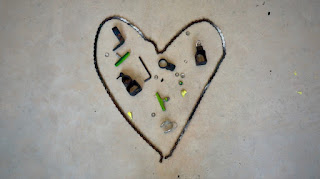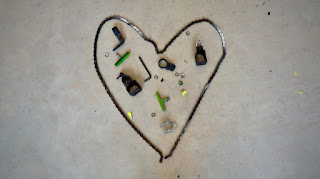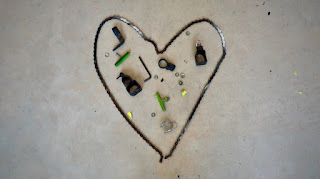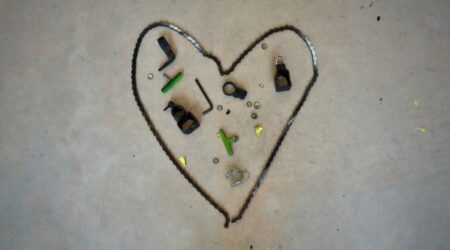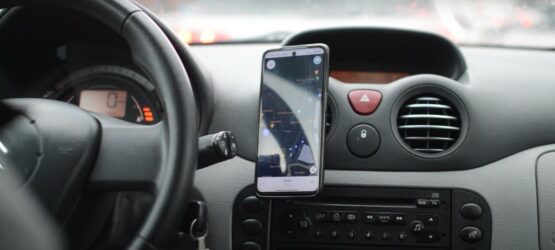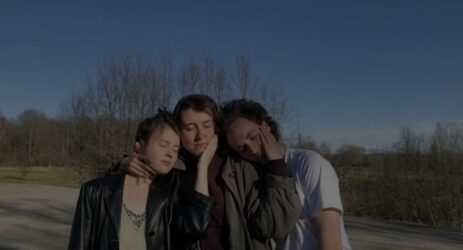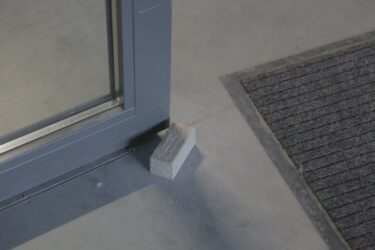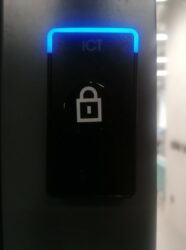Academic Affairs OfficeAccessory DesignAnimationArchitecture and Urban DesignArt EducationCenter for Flat TechnologiesCeramicsCultural Heritage and ConservationDepartmentsDesign and Technology FuturesDoctoral SchoolDrawingFacilities and WorkshopsFaculty of ArchitectureFaculty of Art and CultureFaculty of DesignFaculty of Fine ArtsFashion DesignFinancial DepartmentGalleryGlass ArtGraphic ArtGraphic DesignInstallation and SculptureInstitute of Art History and Visual CultureInternational OfficeIT OfficeJewellery and BlacksmithingLandscape ArchitectureLibraryLinnaehitus @enMaking SpaceNew MediaOffice of the RectorateOpen AcademyPaintingPerforming ArtsPhotographyProduct DesignRectorateResearch and Development OfficeScenographySupport UnitsTextile DesignUncategorizedUrban PlanningUrban Studies
“Where is the body?” in Narva
07.05.2022 — 08.06.2022
“Where is the body?” in Narva
Where is the body?
Group exhibition in Narva Art Residency, Joala 18, Narva
07.05.–08.06
Artists: Eero Alev, Ina Ebenberger, Daniel Silva Flandez, Yigit Gönlügür, Loora Kaubi, Jakob Kolb, Olev Kuma, Lisette Lepik, Sigrid Mau, Amar Priganica, Brenda Purtsak, Ramsko, Alfred Rottensteiner, Denisa Stefanigova, Magdalena Schwaiger, Mattias Veller. Curated by Lilian Hiob and Julius Pristauz
The group exhibition Where is the body? arises from a collaboration between the Academy of Fine Arts Vienna, and the Estonian Academy of Arts, bringing together a variety of emerging artists, currently studying in the painting departments of the two academies.
Where is the body? gathers assumptions, statements and questions regarding different forms of (self-)embodiment. Questions as to how the body is currently situated in terms of its representation in the students’ practices are central to the curatorial concept of the exhibition. The exhibition presents different depictions and notions of the body in an ever quickly spinning world, opening up space for discussions surrounding it.
Depictions of fantastical bodies fuse into questions about hierarchies between different species. Loosening up borders, tissues, and deadlocked positions, we find a variety of expressions ranging from more playful approaches to very serious and intense dissections towards the topic.
Sketches for possible skeletons of the medium of painting and thoughts about material manifestations of bodily gestures within it go alongside introspections and reflections on the anatomy of the self. The artists comment on bodies in use, their capabilities and boundaries, extreme situations and the body as a tool for manipulation and power play.
The works negotiate body politics and within those relationships of gender, identity and representation.
Themes such as deconstruction and decay, performance, dependency and co-dependency can be found as opposed to abstract and hybrid images with transformational potential.
From traditional depiction to the changing stance of the body over time the works can help to position and define how and where the body finds a home in young contemporary artists’ practice.
The display and architecture of the exhibition expand on these ideas further, with its rhizomatic structure making for a spatial experience with different stations.
Examining matters connected to belonging, visibility, and desire, Where is the body? helps us to map various narratives that are socially, historically and culturally interwoven and take bodies, in a broader sense, as their starting point.
Support: Austrian Embassy in Tallinn, Estonian Embassy in Vienna, Erasmus+, Punch Drink, Academy of Fine Arts Vienna, Vilnius Academy of Arts, Estonian Academy of Arts
REGISTER TO THE BUS to Narva on May 6th
More about the exhibition in Vienna
Posted by Andres Lõo — Permalink
“Where is the body?” in Narva
Saturday 07 May, 2022 — Wednesday 08 June, 2022
Where is the body?
Group exhibition in Narva Art Residency, Joala 18, Narva
07.05.–08.06
Artists: Eero Alev, Ina Ebenberger, Daniel Silva Flandez, Yigit Gönlügür, Loora Kaubi, Jakob Kolb, Olev Kuma, Lisette Lepik, Sigrid Mau, Amar Priganica, Brenda Purtsak, Ramsko, Alfred Rottensteiner, Denisa Stefanigova, Magdalena Schwaiger, Mattias Veller. Curated by Lilian Hiob and Julius Pristauz
The group exhibition Where is the body? arises from a collaboration between the Academy of Fine Arts Vienna, and the Estonian Academy of Arts, bringing together a variety of emerging artists, currently studying in the painting departments of the two academies.
Where is the body? gathers assumptions, statements and questions regarding different forms of (self-)embodiment. Questions as to how the body is currently situated in terms of its representation in the students’ practices are central to the curatorial concept of the exhibition. The exhibition presents different depictions and notions of the body in an ever quickly spinning world, opening up space for discussions surrounding it.
Depictions of fantastical bodies fuse into questions about hierarchies between different species. Loosening up borders, tissues, and deadlocked positions, we find a variety of expressions ranging from more playful approaches to very serious and intense dissections towards the topic.
Sketches for possible skeletons of the medium of painting and thoughts about material manifestations of bodily gestures within it go alongside introspections and reflections on the anatomy of the self. The artists comment on bodies in use, their capabilities and boundaries, extreme situations and the body as a tool for manipulation and power play.
The works negotiate body politics and within those relationships of gender, identity and representation.
Themes such as deconstruction and decay, performance, dependency and co-dependency can be found as opposed to abstract and hybrid images with transformational potential.
From traditional depiction to the changing stance of the body over time the works can help to position and define how and where the body finds a home in young contemporary artists’ practice.
The display and architecture of the exhibition expand on these ideas further, with its rhizomatic structure making for a spatial experience with different stations.
Examining matters connected to belonging, visibility, and desire, Where is the body? helps us to map various narratives that are socially, historically and culturally interwoven and take bodies, in a broader sense, as their starting point.
Support: Austrian Embassy in Tallinn, Estonian Embassy in Vienna, Erasmus+, Punch Drink, Academy of Fine Arts Vienna, Vilnius Academy of Arts, Estonian Academy of Arts
REGISTER TO THE BUS to Narva on May 6th
More about the exhibition in Vienna
Posted by Andres Lõo — Permalink
05.05.2022
Open Lecture: “Artificial Intelligence and the Future of Design” Antoine Picon
Architecture and Urban Design
On May 5th at 6 pm, our Faculty of Architecture will be happy to present architect and historian researching the history of architecture and urban technologies, Professor Antoine Picon with an open lecture titled “Artificial Intelligence and the Future of Design” at the EKA Main Hall.
Will artificial intelligence really impact design practice? If such is the case, what role would be left to humans in a more and more machine-driven context? The lecture will explore some of the possible scenarios linked to the rise of artificial intelligence. Central to these scenarios will be the question of the distribution of agency between humans and machines.
Antoine Picon is the G. Ware Travelstead Professor of the History of Architecture and Technology and Director of Research at the Harvard GSD and Director of Research at the Ecole Nationale des Ponts et Chaussées in Paris. Trained as an engineer, architect, and historian, Picon works on the history of architectural and urban technologies from the eighteenth century to the present. He has published extensively on this subject.
Open Lectures are open to all architecture and design students, professionals and general audience intrigued by spatial and design matters. The lecture is in English and free of charge.
The lecture is one of the subject pre-lectures of the Conference “Innovation and Digital Reality” which takes place 6th of September 2022 in EKA: https://www.artun.ee/…/conference-innovation-and…/
The lecture and conference are supported by Estonian Association of Architects, European Regional Development Fund and EKA.
Posted by Andres Lõo — Permalink
Open Lecture: “Artificial Intelligence and the Future of Design” Antoine Picon
Thursday 05 May, 2022
Architecture and Urban Design
On May 5th at 6 pm, our Faculty of Architecture will be happy to present architect and historian researching the history of architecture and urban technologies, Professor Antoine Picon with an open lecture titled “Artificial Intelligence and the Future of Design” at the EKA Main Hall.
Will artificial intelligence really impact design practice? If such is the case, what role would be left to humans in a more and more machine-driven context? The lecture will explore some of the possible scenarios linked to the rise of artificial intelligence. Central to these scenarios will be the question of the distribution of agency between humans and machines.
Antoine Picon is the G. Ware Travelstead Professor of the History of Architecture and Technology and Director of Research at the Harvard GSD and Director of Research at the Ecole Nationale des Ponts et Chaussées in Paris. Trained as an engineer, architect, and historian, Picon works on the history of architectural and urban technologies from the eighteenth century to the present. He has published extensively on this subject.
Open Lectures are open to all architecture and design students, professionals and general audience intrigued by spatial and design matters. The lecture is in English and free of charge.
The lecture is one of the subject pre-lectures of the Conference “Innovation and Digital Reality” which takes place 6th of September 2022 in EKA: https://www.artun.ee/…/conference-innovation-and…/
The lecture and conference are supported by Estonian Association of Architects, European Regional Development Fund and EKA.
Posted by Andres Lõo — Permalink
29.04.2022
Urban Ethnography – Technoecologies of care. Final presentations
Urban Studies
Taking technoecologies of care in (hard or soft) urban infrastructure as a starting point, the Urban Ethnography course (tutors: Agata Marzecova and Hanna Husberg) uses ethnographic strategies to make perceptible interdisciplinary phenomena that cannot be described from a disciplinary perspective. During the course the participants are encouraged to develop collaborative research projects that explore boundary approaches to ethnography by critically employing creative and artistic research methods in the research process, as well as for conveying their research results.
Whereas ecology can be understood as a science of relatedness between things, beings and processes that make up urban nature or urban space, technoecologies allows an analysis of the entanglement of technologies and natures, and draws attention to how the materialisation of nature is always and already a mediated phenomenon. Subsequently, addressing care through its technoecologies allows for a prism through which human, non-human and technological elements are treated not as separate entities but as interrelated aspects of care, maintenance and repair.
The finals will start at 14:00 with four group presentations by students (abstracts below). This will be followed by a presentation starting at 17.30 by our external reviewer, Swedish-Brazilian artist, researcher, writer and Senior Lecturer in Media and Communication Studies at Södertörn University (Stockholm), Isabel Löfgren. Lögfgren often works in collaboration with artistic collectives and art institutions considering issues in visual, gender, social and environmental justice and her research interests include cultural politics, aesthetics, and the philosophy of migration and diaspora in the fields of contemporary art, media philosophy, and media activism.
Facebook event can be found HERE.
Pimp my bike
By Martina Maria Semenzato, Leonardo Improta , Paul Jochen Simon

As our project, we transformed the “simple” act of fixing a bicycle into an introspective investigation of the concept of care and its implications. Within a few weeks, we collaboratively tried to bring life into a neglected two-wheeler. In all repairing sessions we took time for self-reflection, retracing the steps, thoughts and actions performed. By this, we tried to dig out the underlying patterns that are connected to our doing. Analysing the process brought up several challenges and questions. Is fixing the bike an act of care that we do towards the object, or towards ourselves? How are gender roles manifested in our actions? Can you break something as an act of maintenance? Is it necessary to receive care in order to perform an act of care? Is the concept of care an act of pure altruism, completely unrelated to any kind of end or return? Are we doing this project merely out of selfishness aimed at completing an assigned task to get a grade? What does care mean for us? Finally, the reflections were transformed into a video installation that will be displayed this Friday.
(No) More Stretch Please – Manifesto for (In)Flexibility
By Paula Kristiāna Veidenbauma, Jannik Kastrup, Luca Liese Ritter

We have a problem. At the Estonian Academy of Arts, a room can become an exhibition hall, a hallway can be turned into a conference center, any of the concrete walls—into galleries, waiting for the next vernissage to start. The architecture of EKA’s new building bears unending potential imaginaries, designed as always hybrid, always adaptable, and ever-changing. But how much space is left for flexibility in the program designs? And how does it show in the program implementation? Does the immaterial system behind the space provide a flexible support mechanism for students when in need or is flexibility ultimately a false promise, disguising flaws within the university’s structure?
The project examines the relationship between the flexible-oh-so-flexible working environment and culture at the university and the systematic framework of program structures at the EKA Faculty of Architecture. Grounded in our own experience, observations and private stories of students, at times faced with the limits of the flexibility, The Manifesto for (In)Flexibility is both an attempt to gain visibility of the invisible sufferings at an institution deeply grounded within the landscape of neoliberal academia, as well as a manual on how to resist the institutional normalisation of overworking. Presented in a form of a performative reading, the project includes movement practices addressing space exploration, testing the limits of the flexibility of one’s body and those of the space, thinking, where would they meet.

the door stop
By Nora Soo, Kush Badhwar, Khadeeja Farrukh

The new building for the Estonian Academy of Arts (EKA), made amongst the remains of an old textile factory, was opened for use in 2018. The ground for a newer EKA building is being prepared behind the current building. A new green sign, with the signature EKA typeface was erected to mark this site within the last week.
Part of the process of envisioning, designing and producing new and newer EKA buildings, is the narrativisation and historicisation of these sites, most visibly undertaken as marketing materials, often to attract new students to the university. the door stopis a zine that seeks to broaden narrativisation and historicisation of EKA through the observation, documentation, story-telling and imaginations of the building from the student perspective, with particular attention to use, care, appropriation, resistance, creative misuse, image-based intervention and other forms that fall outside of the intentions of the architect(s) and hegemony of the institution.
Composed of photography, text and sketches, the door stop, though limited to the perspective of three students, hopes to document the overlooked and the ephemeral; foster care, interest and engagement in the space amongst students + their future generations; and to possibly influence change in the production of further EKA buildings.
Looking for Action
By Christian Hörner, Paulina Schroeder, Nabeel Imtiaz
Techno-Ecologies of Care emerge throughout the entanglements between the courier, his mobile phone, the car, the food, and many other things, affording moments of caring for and about in this system of provision of life-sustaining matter. Our project tries to present illuminating documentation of the everyday work of a bolt food courier. These urban workers are often invisible, working under a highly neoliberal regime of platform capitalism. Also, they are directly exposed to novel algorithmic means which manage their routes and govern the relationship between couriers, restaurants, and customers which make up the urban space of food delivery. Our video emerged out of the empirical practice of participant observation and represents a methodical mixture of interview/conversation and active participation in the process of food delivery. We aim to shed light on the internalities of food delivery in the sense of capturing the potentially boring details of everydayness as proposed by Susan Leigh Star in her essay “The Ethnography of Infrastructure”.
Posted by Kaija-Luisa Kurik — Permalink
Urban Ethnography – Technoecologies of care. Final presentations
Friday 29 April, 2022
Urban Studies
Taking technoecologies of care in (hard or soft) urban infrastructure as a starting point, the Urban Ethnography course (tutors: Agata Marzecova and Hanna Husberg) uses ethnographic strategies to make perceptible interdisciplinary phenomena that cannot be described from a disciplinary perspective. During the course the participants are encouraged to develop collaborative research projects that explore boundary approaches to ethnography by critically employing creative and artistic research methods in the research process, as well as for conveying their research results.
Whereas ecology can be understood as a science of relatedness between things, beings and processes that make up urban nature or urban space, technoecologies allows an analysis of the entanglement of technologies and natures, and draws attention to how the materialisation of nature is always and already a mediated phenomenon. Subsequently, addressing care through its technoecologies allows for a prism through which human, non-human and technological elements are treated not as separate entities but as interrelated aspects of care, maintenance and repair.
The finals will start at 14:00 with four group presentations by students (abstracts below). This will be followed by a presentation starting at 17.30 by our external reviewer, Swedish-Brazilian artist, researcher, writer and Senior Lecturer in Media and Communication Studies at Södertörn University (Stockholm), Isabel Löfgren. Lögfgren often works in collaboration with artistic collectives and art institutions considering issues in visual, gender, social and environmental justice and her research interests include cultural politics, aesthetics, and the philosophy of migration and diaspora in the fields of contemporary art, media philosophy, and media activism.
Facebook event can be found HERE.
Pimp my bike
By Martina Maria Semenzato, Leonardo Improta , Paul Jochen Simon

As our project, we transformed the “simple” act of fixing a bicycle into an introspective investigation of the concept of care and its implications. Within a few weeks, we collaboratively tried to bring life into a neglected two-wheeler. In all repairing sessions we took time for self-reflection, retracing the steps, thoughts and actions performed. By this, we tried to dig out the underlying patterns that are connected to our doing. Analysing the process brought up several challenges and questions. Is fixing the bike an act of care that we do towards the object, or towards ourselves? How are gender roles manifested in our actions? Can you break something as an act of maintenance? Is it necessary to receive care in order to perform an act of care? Is the concept of care an act of pure altruism, completely unrelated to any kind of end or return? Are we doing this project merely out of selfishness aimed at completing an assigned task to get a grade? What does care mean for us? Finally, the reflections were transformed into a video installation that will be displayed this Friday.
(No) More Stretch Please – Manifesto for (In)Flexibility
By Paula Kristiāna Veidenbauma, Jannik Kastrup, Luca Liese Ritter

We have a problem. At the Estonian Academy of Arts, a room can become an exhibition hall, a hallway can be turned into a conference center, any of the concrete walls—into galleries, waiting for the next vernissage to start. The architecture of EKA’s new building bears unending potential imaginaries, designed as always hybrid, always adaptable, and ever-changing. But how much space is left for flexibility in the program designs? And how does it show in the program implementation? Does the immaterial system behind the space provide a flexible support mechanism for students when in need or is flexibility ultimately a false promise, disguising flaws within the university’s structure?
The project examines the relationship between the flexible-oh-so-flexible working environment and culture at the university and the systematic framework of program structures at the EKA Faculty of Architecture. Grounded in our own experience, observations and private stories of students, at times faced with the limits of the flexibility, The Manifesto for (In)Flexibility is both an attempt to gain visibility of the invisible sufferings at an institution deeply grounded within the landscape of neoliberal academia, as well as a manual on how to resist the institutional normalisation of overworking. Presented in a form of a performative reading, the project includes movement practices addressing space exploration, testing the limits of the flexibility of one’s body and those of the space, thinking, where would they meet.

the door stop
By Nora Soo, Kush Badhwar, Khadeeja Farrukh

The new building for the Estonian Academy of Arts (EKA), made amongst the remains of an old textile factory, was opened for use in 2018. The ground for a newer EKA building is being prepared behind the current building. A new green sign, with the signature EKA typeface was erected to mark this site within the last week.
Part of the process of envisioning, designing and producing new and newer EKA buildings, is the narrativisation and historicisation of these sites, most visibly undertaken as marketing materials, often to attract new students to the university. the door stopis a zine that seeks to broaden narrativisation and historicisation of EKA through the observation, documentation, story-telling and imaginations of the building from the student perspective, with particular attention to use, care, appropriation, resistance, creative misuse, image-based intervention and other forms that fall outside of the intentions of the architect(s) and hegemony of the institution.
Composed of photography, text and sketches, the door stop, though limited to the perspective of three students, hopes to document the overlooked and the ephemeral; foster care, interest and engagement in the space amongst students + their future generations; and to possibly influence change in the production of further EKA buildings.
Looking for Action
By Christian Hörner, Paulina Schroeder, Nabeel Imtiaz
Techno-Ecologies of Care emerge throughout the entanglements between the courier, his mobile phone, the car, the food, and many other things, affording moments of caring for and about in this system of provision of life-sustaining matter. Our project tries to present illuminating documentation of the everyday work of a bolt food courier. These urban workers are often invisible, working under a highly neoliberal regime of platform capitalism. Also, they are directly exposed to novel algorithmic means which manage their routes and govern the relationship between couriers, restaurants, and customers which make up the urban space of food delivery. Our video emerged out of the empirical practice of participant observation and represents a methodical mixture of interview/conversation and active participation in the process of food delivery. We aim to shed light on the internalities of food delivery in the sense of capturing the potentially boring details of everydayness as proposed by Susan Leigh Star in her essay “The Ethnography of Infrastructure”.
Posted by Kaija-Luisa Kurik — Permalink
07.09.2022 — 20.11.2022
TAB Tallinn Architecture Biennial 2022
Faculty of Architecture
The main program of the Tallinn Architecture Biennale 2022 combines food and architecture
The 6th Tallinn Architecture Biennale “Edible; Or, The Architecture of Metabolism” invites architects and architecture enthusiasts to think about a sustainable future, where natural processes are used and waste is reduced.
Biennale curators Lydia Kallipoliti (Greece/USA) and Areti Markopoulou (Spain/Greece) in cooperation with Estonian adviser Ivan Sergejev and curator’s assistant Sonia Sobrino Ralston (USA) give architects, planners and environmental designers the opportunity to discuss and explore how through architecture it is possible to influence circular economy operations such as food and energy production and resource degradation.
TAB 2022 chief curators Lydia Kallipoliti and Areti Markopoulou are critical of the consuming and polluting human-made environment and invite to imagine an architecture that produces resources and uses and decomposes its waste. “Amid the current crisis of public health, climate change and social inequality, it is clear that the fragility of our supply chains requires new forms of local sourcing and production. TAB 2022 addresses the question of ‘where our food comes from’ as a creative design challenge and raises questions about the aesthetic, cultural and experiential qualities of the environment around us throughout its life cycle,” explained TAB 2022 chief curators Kallipoliti and Markopoulou.
Estonian Academy of Arts is happy to contribute to the versatile programme of TAB with international conference “Innovation and Digital Reality”, taking place on 6 September at EKA. Read more and sign up.
See the entire TAB 2022 program here: https://2022.tab.ee/et/programm/
The curatorial exhibition “Edible” brings together world-class designers and architects, whose works are divided into five thematic blocks: Metabolic Home, From Stone to Mull, Food and Geopolitics, Archeology of Architecture and Food Systems, and Future Food.
In addition, the chief curators have put together a 2-day “Edible” conference program for architects, designers and others interested in the space. The program includes exciting discussions about the importance of design in urban space, the effects of history on today’s environment, as well as discussions about the city of the future. The main speakers of the symposium will be Beatriz Colomina, the well-known author of design books, Andrés Jaque, the head of the design and research studio Effekt and the research center Office for Political Innovation.
As part of the TAB 2022 installation competition, the installation “Fungible Non Fungible” by IHEARTBLOB (Austria, UK, Estonia) will appear in front of the Estonian Museum of Architecture. It is the world’s first blockchain-financed architectural project. Their work gives a completely new dimension to the traditional role of an architect – an architect is no longer just a master, but a system designer who brings together innovative technologies, encouraging communities and local masters to be part of the creative process. For this, the IHEARTBLOB team is creating a NFT (Non-Fungible Token) platform where those who wish can design and buy a piece of the work. The result is a unique installation created and owned by different designers from all over the world. The platform for joint design of the installation will be opened in May.
The main program of TAB 2022 consists of five parts: a curatorial exhibition and an installation competition program at the Estonian Museum of Architecture, a 2-day symposium and a vision competition exhibition at the Kultuurikatel, and an international exhibition of architecture schools at the EKKM garden.
TAB 2022 invites all Ukrainian architects to participate in the TAB program free of charge. More information about free admission at info@tab.ee.
The main sponsor of the Tallinn Architecture Biennale 2022 is Thermory – the world’s largest manufacturer of chemical-free thermal wood, whose material has been used in outstanding projects in more than 50 countries around the world.
Supporters and partners of TAB 2022: Ministry of Culture, Cultural Endowment, European Development Fund, British Council, Onassis Culture, Visit Estonia, Association of Estonian Architects, Estonian Architecture Museum, Tallinn City Planning Board, IAAC, Friendship Products, Laufen, Ruukki, Velux, Tallink Hotels, Estonian Academy of Arts.
Posted by Triin Männik — Permalink
TAB Tallinn Architecture Biennial 2022
Wednesday 07 September, 2022 — Sunday 20 November, 2022
Faculty of Architecture
The main program of the Tallinn Architecture Biennale 2022 combines food and architecture
The 6th Tallinn Architecture Biennale “Edible; Or, The Architecture of Metabolism” invites architects and architecture enthusiasts to think about a sustainable future, where natural processes are used and waste is reduced.
Biennale curators Lydia Kallipoliti (Greece/USA) and Areti Markopoulou (Spain/Greece) in cooperation with Estonian adviser Ivan Sergejev and curator’s assistant Sonia Sobrino Ralston (USA) give architects, planners and environmental designers the opportunity to discuss and explore how through architecture it is possible to influence circular economy operations such as food and energy production and resource degradation.
TAB 2022 chief curators Lydia Kallipoliti and Areti Markopoulou are critical of the consuming and polluting human-made environment and invite to imagine an architecture that produces resources and uses and decomposes its waste. “Amid the current crisis of public health, climate change and social inequality, it is clear that the fragility of our supply chains requires new forms of local sourcing and production. TAB 2022 addresses the question of ‘where our food comes from’ as a creative design challenge and raises questions about the aesthetic, cultural and experiential qualities of the environment around us throughout its life cycle,” explained TAB 2022 chief curators Kallipoliti and Markopoulou.
Estonian Academy of Arts is happy to contribute to the versatile programme of TAB with international conference “Innovation and Digital Reality”, taking place on 6 September at EKA. Read more and sign up.
See the entire TAB 2022 program here: https://2022.tab.ee/et/programm/
The curatorial exhibition “Edible” brings together world-class designers and architects, whose works are divided into five thematic blocks: Metabolic Home, From Stone to Mull, Food and Geopolitics, Archeology of Architecture and Food Systems, and Future Food.
In addition, the chief curators have put together a 2-day “Edible” conference program for architects, designers and others interested in the space. The program includes exciting discussions about the importance of design in urban space, the effects of history on today’s environment, as well as discussions about the city of the future. The main speakers of the symposium will be Beatriz Colomina, the well-known author of design books, Andrés Jaque, the head of the design and research studio Effekt and the research center Office for Political Innovation.
As part of the TAB 2022 installation competition, the installation “Fungible Non Fungible” by IHEARTBLOB (Austria, UK, Estonia) will appear in front of the Estonian Museum of Architecture. It is the world’s first blockchain-financed architectural project. Their work gives a completely new dimension to the traditional role of an architect – an architect is no longer just a master, but a system designer who brings together innovative technologies, encouraging communities and local masters to be part of the creative process. For this, the IHEARTBLOB team is creating a NFT (Non-Fungible Token) platform where those who wish can design and buy a piece of the work. The result is a unique installation created and owned by different designers from all over the world. The platform for joint design of the installation will be opened in May.
The main program of TAB 2022 consists of five parts: a curatorial exhibition and an installation competition program at the Estonian Museum of Architecture, a 2-day symposium and a vision competition exhibition at the Kultuurikatel, and an international exhibition of architecture schools at the EKKM garden.
TAB 2022 invites all Ukrainian architects to participate in the TAB program free of charge. More information about free admission at info@tab.ee.
The main sponsor of the Tallinn Architecture Biennale 2022 is Thermory – the world’s largest manufacturer of chemical-free thermal wood, whose material has been used in outstanding projects in more than 50 countries around the world.
Supporters and partners of TAB 2022: Ministry of Culture, Cultural Endowment, European Development Fund, British Council, Onassis Culture, Visit Estonia, Association of Estonian Architects, Estonian Architecture Museum, Tallinn City Planning Board, IAAC, Friendship Products, Laufen, Ruukki, Velux, Tallink Hotels, Estonian Academy of Arts.
Posted by Triin Männik — Permalink
25.04.2022 — 29.04.2022
Mental Vitamine Week
Student Council
EKA Student Council invites you to participate in the mental vitamine week!
The goal of the week is to draw attention to your own health and find the best in every situation where we find ourselves.
THEMES
Monday: resting — online detox
Tuesday: therapy — stress relief
Wednesday: movement — yoga marathon
Thursday: positive emotions — positive vibes
Friday: good relations — party
WEEK’S SCHEDULE
Monday: resting — online detox
— challenge: give your phone away for the whole school day
— napping room (A501), 13:00—17:00
Tuesday: therapy — stress relief
— jumping therapy (courtyard), 09:00—17:00
— screaming room (student council, D600), 10:00—14:00
— power punch (C306), 14:00—20:00
— Bullet Journey notebooks (lobby)
Wednesday: movement — yoga marathon
— yoga the whole day (A501), 10:00—17:00
Thursday: positive emotions — positive vibes
— free huggers around the school
— positive notes appear
— mental lecture (A501), 17:00—19:00
— Argo Publishers books (lobby)
Friday: good relations — health party
— healthy shot bar
— piilu osakonda: product design, party (C301), 19:30—…
The event takes place at the Academy of Arts, for everybody, throughout the week and of course, totally free.
Mental Vitamine Week is supported by MyFitness, A. Le Coq, Medifum and Mattias Veller
Posted by Andres Lõo — Permalink
Mental Vitamine Week
Monday 25 April, 2022 — Friday 29 April, 2022
Student Council
EKA Student Council invites you to participate in the mental vitamine week!
The goal of the week is to draw attention to your own health and find the best in every situation where we find ourselves.
THEMES
Monday: resting — online detox
Tuesday: therapy — stress relief
Wednesday: movement — yoga marathon
Thursday: positive emotions — positive vibes
Friday: good relations — party
WEEK’S SCHEDULE
Monday: resting — online detox
— challenge: give your phone away for the whole school day
— napping room (A501), 13:00—17:00
Tuesday: therapy — stress relief
— jumping therapy (courtyard), 09:00—17:00
— screaming room (student council, D600), 10:00—14:00
— power punch (C306), 14:00—20:00
— Bullet Journey notebooks (lobby)
Wednesday: movement — yoga marathon
— yoga the whole day (A501), 10:00—17:00
Thursday: positive emotions — positive vibes
— free huggers around the school
— positive notes appear
— mental lecture (A501), 17:00—19:00
— Argo Publishers books (lobby)
Friday: good relations — health party
— healthy shot bar
— piilu osakonda: product design, party (C301), 19:30—…
The event takes place at the Academy of Arts, for everybody, throughout the week and of course, totally free.
Mental Vitamine Week is supported by MyFitness, A. Le Coq, Medifum and Mattias Veller
Posted by Andres Lõo — Permalink
21.04.2022 — 28.04.2022
Alina Birjuk “May there be enough bread!”
Photography
Estonian sayings “one has to honour bread” or “bread is older than us” refer to the special meaning of bread. Numerous traditions, beliefs, rituals and proverbs are associated to bread. The taste and form of bread has not changed throughout centuries and breakbaking is a very special skill. For me, bread is something that makes me think of my great-grandparents and my roots. I decided to photograph bread against the white backdrop where the time of the picture-taking is imperceptible. Bread is the centerpiece of attention while its texture and form has been emphasized.
Posted by Maris Karjatse — Permalink
Alina Birjuk “May there be enough bread!”
Thursday 21 April, 2022 — Thursday 28 April, 2022
Photography
Estonian sayings “one has to honour bread” or “bread is older than us” refer to the special meaning of bread. Numerous traditions, beliefs, rituals and proverbs are associated to bread. The taste and form of bread has not changed throughout centuries and breakbaking is a very special skill. For me, bread is something that makes me think of my great-grandparents and my roots. I decided to photograph bread against the white backdrop where the time of the picture-taking is imperceptible. Bread is the centerpiece of attention while its texture and form has been emphasized.
Posted by Maris Karjatse — Permalink
21.04.2022 — 28.04.2022
Katerina Rothberg “Exit”
Showcase Gallery
Current work is a photo montage that has been combined by a staged studio photograph as well as a view from my window. This is the view of Lasnamäe district, Tallinn, where I lived fifteen years ago and temporarily living now. Nothing has changed – the same monotonousness and hopelessness, the same sad buildings and empty looks – and again I feel the need to escape this place. I am looking up – where the blue sky is, knowing that there is always a way out.
Posted by Maris Karjatse — Permalink
Katerina Rothberg “Exit”
Thursday 21 April, 2022 — Thursday 28 April, 2022
Showcase Gallery
Current work is a photo montage that has been combined by a staged studio photograph as well as a view from my window. This is the view of Lasnamäe district, Tallinn, where I lived fifteen years ago and temporarily living now. Nothing has changed – the same monotonousness and hopelessness, the same sad buildings and empty looks – and again I feel the need to escape this place. I am looking up – where the blue sky is, knowing that there is always a way out.
Posted by Maris Karjatse — Permalink
29.04.2022 — 19.05.2022
Assessment Marathon 29.04–19.05.2022 at EKA Gallery
Mon-Sat, 3—6 pm
May brings an opportunity to experience, in an exhibition format, works produced by students in the Faculty of Fine Arts as their term projects: every day there will be a fresh crop of university students’ works on display in the gallery.
Works in contemporary art, prints, installation, sculpture and painting curricula will be on display. On each morning of the marathon, a new exhibition will be installed and in the evening the exhibit will give way to the next one. Hopefully, viewers will be able to keep up with the pace of the young artists.
SCHEDULE
29.–30.04 – Drawing, supervisor Ülle Marks
03.05 – Studio photo, supervisor Madis Kurss
04.05 – Drawing, supervisor Ulvi Haagensen
05.05 – Drawing, supervisor Tõnis Saadoja
06.05 – Drawing, supervisors Maiu Rõõmus, Matti Pärk
07.05 – Conceptual drawing supervisor, juhendaja Anna Škodenko
09.05 – Conceptual drawing supervisor, juhendaja Tõnis Saadoja
10.05 – Graphic art, supervisors Viktor Gurov, Eve Kask, Lennart Mänd
11–12.05 – Contemporary art, supervisors Marge Monko, Taavi Talve, Liina Siib, Kristi Kongi, John Grzinich, Kristaps Ancans, Anu Vahtra
13–14.05 – Kujundliku Mõtte Labor— Ekspeditsioon Narva, supervisor Ene-Liis Semper
16.05 – Graphic art, supervisors Maria Erikson, Britta Benno, Charlotte Biszewski, Aarne – Mesikäpp, Maria Izabella Lehtsaar
17.05 – Photo art project, supervisors Marge Monko, Reimo Võsa-Tangsoo
18.05 – Painting, supervisors Mart Vainre, Tiina Tammetalu, Aapo Pukk
19.05 – Painting, supervisors Sigrid Viir, Mihkel Ilus, Tõnis Saadoja, Heldur Lassi
Posted by Pire Sova — Permalink
Assessment Marathon 29.04–19.05.2022 at EKA Gallery
Friday 29 April, 2022 — Thursday 19 May, 2022
Mon-Sat, 3—6 pm
May brings an opportunity to experience, in an exhibition format, works produced by students in the Faculty of Fine Arts as their term projects: every day there will be a fresh crop of university students’ works on display in the gallery.
Works in contemporary art, prints, installation, sculpture and painting curricula will be on display. On each morning of the marathon, a new exhibition will be installed and in the evening the exhibit will give way to the next one. Hopefully, viewers will be able to keep up with the pace of the young artists.
SCHEDULE
29.–30.04 – Drawing, supervisor Ülle Marks
03.05 – Studio photo, supervisor Madis Kurss
04.05 – Drawing, supervisor Ulvi Haagensen
05.05 – Drawing, supervisor Tõnis Saadoja
06.05 – Drawing, supervisors Maiu Rõõmus, Matti Pärk
07.05 – Conceptual drawing supervisor, juhendaja Anna Škodenko
09.05 – Conceptual drawing supervisor, juhendaja Tõnis Saadoja
10.05 – Graphic art, supervisors Viktor Gurov, Eve Kask, Lennart Mänd
11–12.05 – Contemporary art, supervisors Marge Monko, Taavi Talve, Liina Siib, Kristi Kongi, John Grzinich, Kristaps Ancans, Anu Vahtra
13–14.05 – Kujundliku Mõtte Labor— Ekspeditsioon Narva, supervisor Ene-Liis Semper
16.05 – Graphic art, supervisors Maria Erikson, Britta Benno, Charlotte Biszewski, Aarne – Mesikäpp, Maria Izabella Lehtsaar
17.05 – Photo art project, supervisors Marge Monko, Reimo Võsa-Tangsoo
18.05 – Painting, supervisors Mart Vainre, Tiina Tammetalu, Aapo Pukk
19.05 – Painting, supervisors Sigrid Viir, Mihkel Ilus, Tõnis Saadoja, Heldur Lassi
Posted by Pire Sova — Permalink
25.04.2022 — 27.04.2022
Jette Loona Hermanis “Elegy of Ergot” at EKA Gallery 25 & 27.04.2022
Gallery
Jette Loona Hermanis “Elegy of Ergot”
25, 27.04.2022
20:00
EKA Galerii, Põhja pst 7
Free entrance through the EKA main door
25, 27.04.2022
20:00
EKA Galerii, Põhja pst 7
Free entrance through the EKA main door
Elegy of Ergot is a solo performance, where the central motif lays in a fungal body, that affects the system both on a physical and mind-distorting measure. A love poem to a parasite, that enables the protagonist to access a delirious state, while simultaneously decomposing the flesh.
Staging ritualistic tasks, that intertwine the protagonist’s sense of submerging with nature, and the contrasting, being affiliated to the digital domain. She re-enacts symbolic gestures that deepen her connection with belonging to nature’s force. Rather than performing paganistic actions, she seeks to unfurl the enchantment in a far more subjective matter. It ties with her connection to earth and nature, through which she can realize hidden truths, and embody empowerment of her femininity, sensitivity, intuitiveness and inner world of feelings. The elixir, which her actions end up transforming into, is the ultimate goal to reach her zenith of self. For her to reach this state, she is casted to unlock these riddles, through manipulating movement in time and space.
Staging ritualistic tasks, that intertwine the protagonist’s sense of submerging with nature, and the contrasting, being affiliated to the digital domain. She re-enacts symbolic gestures that deepen her connection with belonging to nature’s force. Rather than performing paganistic actions, she seeks to unfurl the enchantment in a far more subjective matter. It ties with her connection to earth and nature, through which she can realize hidden truths, and embody empowerment of her femininity, sensitivity, intuitiveness and inner world of feelings. The elixir, which her actions end up transforming into, is the ultimate goal to reach her zenith of self. For her to reach this state, she is casted to unlock these riddles, through manipulating movement in time and space.
The performance was created in 2021 during an artist residency in Petrohradská kolektiv, Prague.
Collaborators:
Gil Schneider – soundscape
soundcloud.com/gilschneider/
soundcloud.com/gilschneider/
Nele Kurvits – heels of steel
instagram.com/nele_kurvits
instagram.com/nele_kurvits
Karolina Janulevičiūtė – costume pants
http://nones.121.lt/
http://nones.121.lt/
Martina Gofman – sfx prosthetics
instagram.com/laibalahkaja/
instagram.com/laibalahkaja/
Matiss Rucko – scenography support
https://www.instagram.com/hexmatiss/
https://www.instagram.com/hexmatiss/
Henry Kasch and Johannes Luik – technicians
Jette Loona Hermanis, pulsing Baltic blood, is a performance artist and a choreographer, born in 1997, in Tallinn, Estonia. After finishing her studies in SNDO Choreography, Amsterdam, she has since been based in Tallinn and Riga. She received the Estonian Theatre Prize Dance Award 2022 with Johhan Rosenberg for their performance “Eden Detail”.
The “re-enchantment” of a progressively “disenchanted world” has been one of the overriding aspirations of her artistic inquiry. By reviving notions of individuation through archetypal complementariness she has been consistently appealed to a revaluation of the role of the marvellous and the transcendental. Her work is theatrical and romantically classical, yet stuck in a body of an avatar, expressing the aches of a mechanical machine, the pain of a digital golem, an emo Fairytale drenched in mythological symbolism, the frame – post-internet dark romanticism.
The “re-enchantment” of a progressively “disenchanted world” has been one of the overriding aspirations of her artistic inquiry. By reviving notions of individuation through archetypal complementariness she has been consistently appealed to a revaluation of the role of the marvellous and the transcendental. Her work is theatrical and romantically classical, yet stuck in a body of an avatar, expressing the aches of a mechanical machine, the pain of a digital golem, an emo Fairytale drenched in mythological symbolism, the frame – post-internet dark romanticism.
Supported by the Cultural Endowment of Estonia
Posted by Pire Sova — Permalink
Jette Loona Hermanis “Elegy of Ergot” at EKA Gallery 25 & 27.04.2022
Monday 25 April, 2022 — Wednesday 27 April, 2022
Gallery
Jette Loona Hermanis “Elegy of Ergot”
25, 27.04.2022
20:00
EKA Galerii, Põhja pst 7
Free entrance through the EKA main door
25, 27.04.2022
20:00
EKA Galerii, Põhja pst 7
Free entrance through the EKA main door
Elegy of Ergot is a solo performance, where the central motif lays in a fungal body, that affects the system both on a physical and mind-distorting measure. A love poem to a parasite, that enables the protagonist to access a delirious state, while simultaneously decomposing the flesh.
Staging ritualistic tasks, that intertwine the protagonist’s sense of submerging with nature, and the contrasting, being affiliated to the digital domain. She re-enacts symbolic gestures that deepen her connection with belonging to nature’s force. Rather than performing paganistic actions, she seeks to unfurl the enchantment in a far more subjective matter. It ties with her connection to earth and nature, through which she can realize hidden truths, and embody empowerment of her femininity, sensitivity, intuitiveness and inner world of feelings. The elixir, which her actions end up transforming into, is the ultimate goal to reach her zenith of self. For her to reach this state, she is casted to unlock these riddles, through manipulating movement in time and space.
Staging ritualistic tasks, that intertwine the protagonist’s sense of submerging with nature, and the contrasting, being affiliated to the digital domain. She re-enacts symbolic gestures that deepen her connection with belonging to nature’s force. Rather than performing paganistic actions, she seeks to unfurl the enchantment in a far more subjective matter. It ties with her connection to earth and nature, through which she can realize hidden truths, and embody empowerment of her femininity, sensitivity, intuitiveness and inner world of feelings. The elixir, which her actions end up transforming into, is the ultimate goal to reach her zenith of self. For her to reach this state, she is casted to unlock these riddles, through manipulating movement in time and space.
The performance was created in 2021 during an artist residency in Petrohradská kolektiv, Prague.
Collaborators:
Gil Schneider – soundscape
soundcloud.com/gilschneider/
soundcloud.com/gilschneider/
Nele Kurvits – heels of steel
instagram.com/nele_kurvits
instagram.com/nele_kurvits
Karolina Janulevičiūtė – costume pants
http://nones.121.lt/
http://nones.121.lt/
Martina Gofman – sfx prosthetics
instagram.com/laibalahkaja/
instagram.com/laibalahkaja/
Matiss Rucko – scenography support
https://www.instagram.com/hexmatiss/
https://www.instagram.com/hexmatiss/
Henry Kasch and Johannes Luik – technicians
Jette Loona Hermanis, pulsing Baltic blood, is a performance artist and a choreographer, born in 1997, in Tallinn, Estonia. After finishing her studies in SNDO Choreography, Amsterdam, she has since been based in Tallinn and Riga. She received the Estonian Theatre Prize Dance Award 2022 with Johhan Rosenberg for their performance “Eden Detail”.
The “re-enchantment” of a progressively “disenchanted world” has been one of the overriding aspirations of her artistic inquiry. By reviving notions of individuation through archetypal complementariness she has been consistently appealed to a revaluation of the role of the marvellous and the transcendental. Her work is theatrical and romantically classical, yet stuck in a body of an avatar, expressing the aches of a mechanical machine, the pain of a digital golem, an emo Fairytale drenched in mythological symbolism, the frame – post-internet dark romanticism.
The “re-enchantment” of a progressively “disenchanted world” has been one of the overriding aspirations of her artistic inquiry. By reviving notions of individuation through archetypal complementariness she has been consistently appealed to a revaluation of the role of the marvellous and the transcendental. Her work is theatrical and romantically classical, yet stuck in a body of an avatar, expressing the aches of a mechanical machine, the pain of a digital golem, an emo Fairytale drenched in mythological symbolism, the frame – post-internet dark romanticism.
Supported by the Cultural Endowment of Estonia
Posted by Pire Sova — Permalink
20.04.2022
Jerry Mercury presents: “The Non-Lonelineness Train”
Faculty of Fine Arts
On Monday, April 20, at 16:00, artist Jerry Mercury will screen his video work “The Non-Lonelineness Train” at the Estonian Academy of Arts auditorium room A-101, following there will be an artist discussion lead by Ryan Galer.
Dedicated to the advocacy of neurodivergent people, the film provides an insight into Jerry Mercury’s experience of neurodivergence. Fluctuating between meditation and reflection, interview and autobiography, metaphor and reality, the film resists exclusive rationality, offering a deeper and more nuanced portrayal of identity.
The film is in Russian with English subtitles. (30 minutes)
Jerry Mercury is a Russian non-binary transgender neurodivergent self-advocate, poet, musician, artist, filmmaker, and blogger. In The Non-Loneliness Train, theater director Boris Pavlovich interviews Jerry, who welcomes the viewer to step into the shoes of a neurodivergent person in today’s Russia.
Posted by Andres Lõo — Permalink
Jerry Mercury presents: “The Non-Lonelineness Train”
Wednesday 20 April, 2022
Faculty of Fine Arts
On Monday, April 20, at 16:00, artist Jerry Mercury will screen his video work “The Non-Lonelineness Train” at the Estonian Academy of Arts auditorium room A-101, following there will be an artist discussion lead by Ryan Galer.
Dedicated to the advocacy of neurodivergent people, the film provides an insight into Jerry Mercury’s experience of neurodivergence. Fluctuating between meditation and reflection, interview and autobiography, metaphor and reality, the film resists exclusive rationality, offering a deeper and more nuanced portrayal of identity.
The film is in Russian with English subtitles. (30 minutes)
Jerry Mercury is a Russian non-binary transgender neurodivergent self-advocate, poet, musician, artist, filmmaker, and blogger. In The Non-Loneliness Train, theater director Boris Pavlovich interviews Jerry, who welcomes the viewer to step into the shoes of a neurodivergent person in today’s Russia.
Posted by Andres Lõo — Permalink

